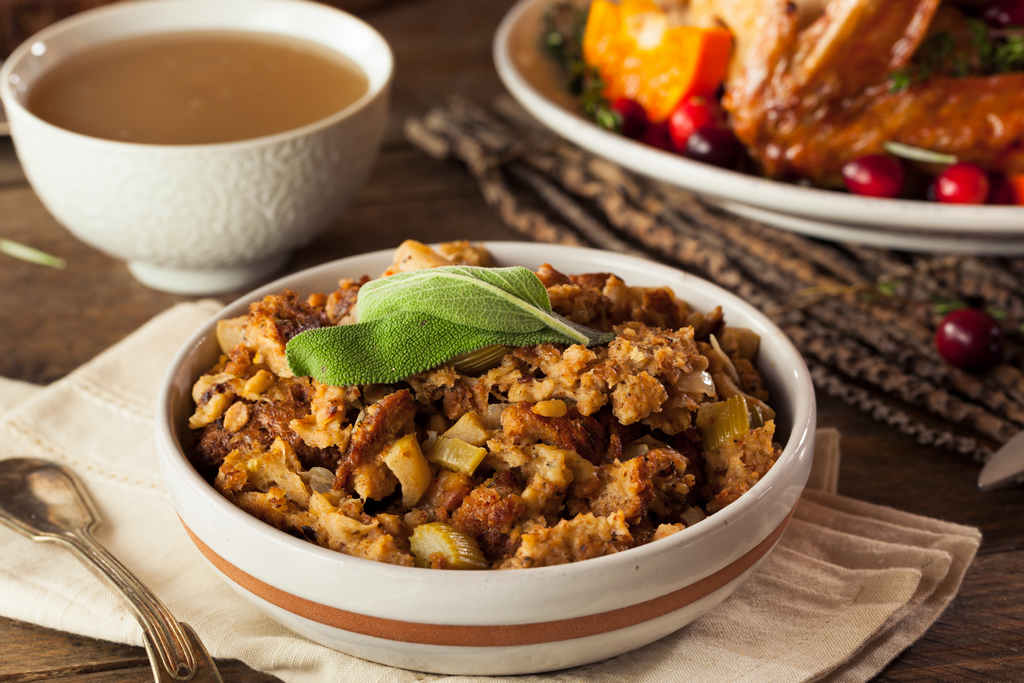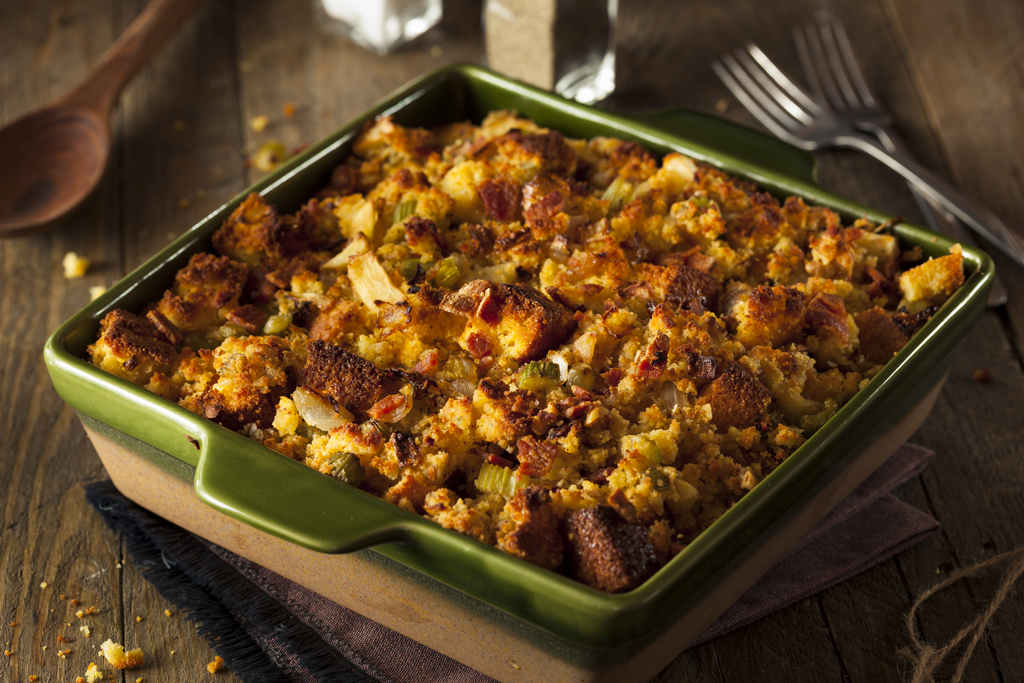A staple of any holiday meal, stuffing is one of the most popular side dishes and the holidays would be considered incomplete without this classic.
Although delicious, stuffing is also an excellent medium for bacterial growth – like Salmonella. During the cooking process, juices from the turkey that contain bacteria drip down and are absorbed by the stuffing.
The only reliable safe method to cook stuffing, is to cook it separate from the turkey – to a safe minimum internal temperature of 165°F as measured with a food thermometer – so as to kill any bacteria.



About Stuffing
This popular holiday side-dish is called by various names: stuffing, filling, or dressing. In the South, it’s typically referred to as dressing. In the Northeast, it’s almost always stuffing. In Pennsylvania Dutch Country, it’s actually called filling and is mixed with mashed potatoes. In the rest of the country, it’s mostly referred to as stuffing.
- Learn about proper hygiene, cross contamination, cold and hot food safety, foodborne pathogens, and best practices to prevent foodborne illness.
- Food Manager Training & ANSI Certification - $99.00
- Food Handler Training - only $7.00!
- HACCP Training: 16hr/4hr/1hr
- Food Allergy Training - $15.00
- Enter Promo "train10off" at Checkout
Almost anything can serve as a stuffing. However, the ingredients used in stuffing are often regional as well. Most differences in regional recipes are a result of what was available locally ― oyster dressing is popular in coastal areas, cornbread stuffing is popular in the South, and sourdough stuffing is big in Northern California.
Popular poultry stuffing often consists of dried breadcrumbs, onion, celery, salt, pepper, and other spices and herbs, a common herb being sage.
While turkey is most commonly associated with stuffing, you can stuff many foods, like chicken, pork, mushrooms, and bell peppers, just to name a few.



Food Safety Issues with Stuffing
The U.S. Department of Agriculture (USDA) states that cooking animals with a body cavity filled with stuffing can present potential food safety issues. These can occur because when the meat reaches a safe temperature, the stuffing inside will not reach a safe temperature to kill bacteria. Furthermore, if the meat is cooked until the stuffing reaches a safe temperature, the meat can be overcooked.



Cooking Turkey Stuffing Safety
The USDA recommends that the entire turkey is cooked to 165°F – including the stuffing – as measured with a food thermometer. If the stuffing doesn’t reach safe minimum internal temperature of 165°F, bacteria can survive and can cause a foodborne illness.
However, cooking the stuffing inside a turkey to 165°F, often means overcooking the bird – so it’s best to cook the stuffing separate.
For optimal safety and uniform doneness, cook the stuffing outside the turkey in a casserole dish.



Leftover Safety
Bacteria multiply rapidly between 40°F and 140°F. To keep food out of this temperature “Danger Zone,” keep cold food cold and hot food hot.
Never leave perishable foods, such as meat, poultry, eggs and stuffing in the “Danger Zone” over 2 hours; 1 hour in temperatures above 90°F.
Leftovers will last for 4 days in the refrigerator, so if you know you won’t use them right away, pack them into freezer bags or airtight containers and freeze. For best quality, use your leftover frozen turkey within four months.



Additional Stuffing & Turkey Food Safety Resources
- 50 Stuffing Recipes – Food Network
- Let’s Talk Turkey Brochure (PDF)
- USDA – Thanksgiving Toolkit to Prevent Foodborne Illness
- Poultry Preparation – USDA
- Let’s Talk Turkey: A Consumer Guide to Safely Roasting a Turkey – USDA
- Turkey Basics: Handling Cooked Dinners & Leftovers – USDA
- Turkey Basics: Safe Cooking – USDA, (Spanish language Turkey Basics)
- CDC Foodborne Illness
- CDC Food Safety






